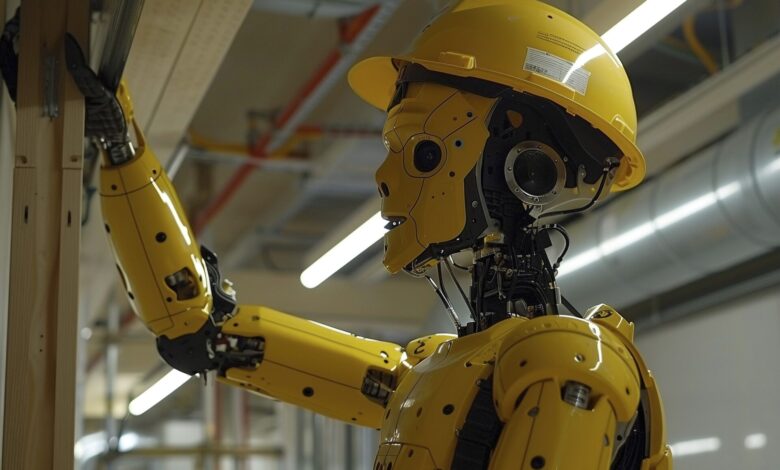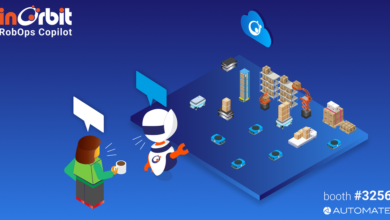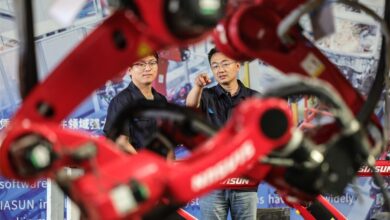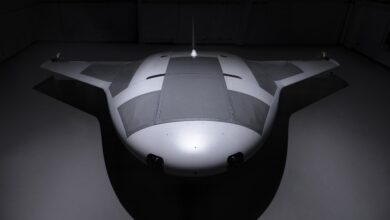Researchers in Europe are making self-adaptive industrial robots safer for human collaboration

Industrial robots have been helping manufacture products and facilitate logistics for more than 60 years. Traditionally, these robots are very good at a specific function — for instance, going from A to B.
Throw an obstacle into their work environment however — be it a physical object or a human collaborator — and severe safety hazards arise.
Technology is progressing such that today’s industrial robots are being designed to be “adaptive,” meaning that they’re capable of adapting to and learning from their environment, including in human interactions.
The big vision is that humans and automated robots will be able to interact with one another on a machine shop floor, reducing the risk involved with having humans work side by side with giant machines.
In Europe, industrial robots are becoming more commonplace. Data published in 2021 from The International Federation of Robotics showed European industrial robot installations up 24% compared to 2020. And while Europe still trails the United States and China in terms of industrial robot use, the growth of EU industrial production — up 8% in 2021 and another 5% in 2022 — could drive robot adoption in factories.
In order to better ensure that the industrial robots of the future can readily adapt to changing environments, while maintaining safe and trustworthy collaboration with humans, a group of universities, tech accelerators and private research labs from the European Union (EU) have established RoboSAPIENS.
The project, which is funded by the European Union’s Horizon Europe 2021-2027 research and innovation programme, will develop and implement safety mechanisms that will empower robots to — at a high level — safely adapt to unexpected changes.
In an interview with TheNextWeb’s Ioanna Lykiardopoulou, consortium partner Ana Cavalcanti, a professor at the University of York, said that the project aims to include a trustworthiness checker in the current Monitor-Analyze-Plan-Execute-Knowledge (MAPE-K) framework for self adaptive systems.
“What is missing here is the inclusion in the loop of a step that verifies whether certified guarantees, of safety or trustworthiness, are kept when plans change,” Cavalcanti told TheNextWeb.
By adding this step, researchers hope that if a robot encounters an obstacle, it will consult if its originally programmed plan is still valid with the introduction of the obstacle. If it is not, the system will self update and a “trustworthiness checker” will validate the changes for safety issues.
The researchers will use a combination of Deep Learning (DL) and Digital Twin (DT) — or a virtual representation of a physical object — techniques to generate the new control settings.
“As the EU advances its industrial robotics capabilities, it’s imperative that measures be taken to ensure the safety and trustworthiness of the next generation of robots working alongside humans in a collaborative environment,” said Peter Gorm Larsen, a Professor in the Department of Electrical and Computer Engineering at Aarhus University, and the coordinator of the RoboSAPIENS project.
“With RoboSAPIENS, we will prepare Europe’s industrial robotics industry for rapid and unforeseen adaptability in system structure and environment, assuring trustworthy collaboration with humans by changing behavior while maintaining and even enhancing performance and safety,” he added.
According to a statement from the consortium, the project is already working on industrial use studies. The first empowers robots to disassemble electronic consumer waste, another aims to improve navigation predictability of autonomous water vessels. A third looks to help Autonomous Mobile Robots (AMRs) adapt to anomalies on machine shop floors, and a fourth will automatically assess risks in human-robot collaboration (cobot) situations.
Consortium partners include Denmark’s Aarhus University; Aristotle University of Thessaloniki, AUTH (Greece); Danish Technological Institute, DTI (Denmark); Fraunhofer IFF, Fraunhofer (Germany); University of York, UoY (United Kingdom); University of Antwerp, UA (Belgium); Norwegian University of Science and Technology, NTNU (Norway); PAL Robotics, PAL (Spain); ISDI Accelerator, ISDI (Spain); Simula Research Lab, SRL (Norway).
The RoboSAPIENS consortium isn’t the only entity working on marketing self adaptive robots safer and more efficient. Earlier this year, Google’s Deep Mind announced series of releases related to industrial robots, including Self-Adaptive Robust Attention for Robotics Transformers (SARA-RT) which helps robots learn and perform new tasks at more efficient speeds. And last year, a team of Japanese researchers developed a learning framework to train robots to “sense” their surrounding environment, making it safer for human-robot collaboration.



